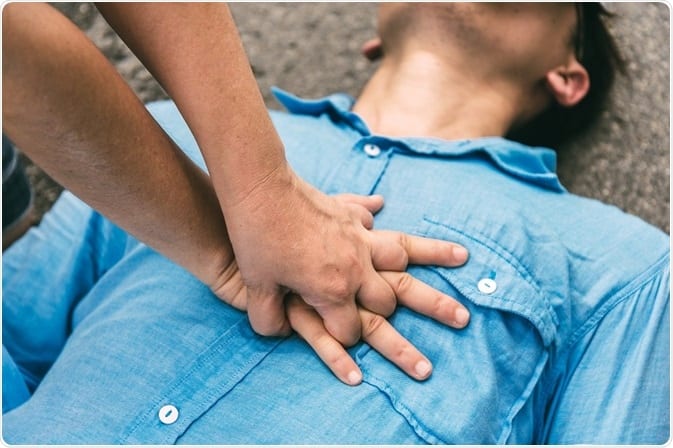It is possible for anyone, at any time, in any location, and at any time to experience cardiac arrest, which is one of the top causes of mortality worldwide. During a cardiac emergency, seventy percent of Americans report feeling helpless because they do not possess the abilities necessary to save their own lives, according to the American Heart Association (AHA). You can equip yourself with the critical skills to potentially save lives in the event of an emergency by enrolling in a training program that teaches you Basic Life Support and Cardiopulmonary Resuscitation, also known as, BLS/CPR. We are going to delve into the reasons why it is essential to learn basic life support and cardiopulmonary resuscitation (BLS/CPR) in this article.
BLS/CPR training programs provide participants with the fundamental abilities necessary to proficiently handle emergency scenarios. The instruction encompasses knowledge of the appropriate protocols to execute in the event of a cardiac emergency, including defibrillation, rescue respiration, and chest compressions. The following life-saving abilities benefit medical professionals, including emergency medical technicians, physicians, and nurses. However, parents, babysitters, and caregivers can all benefit from possessing these fundamental abilities.
BLS/CPR training courses impart critical competencies to both individuals and groups. Among the skills covered are victim assessment, CPR administration, choking relief, and the operation of devices like AEDs (Automated External Defibrillators). Participants will acquire knowledge and skills regarding the correct utilization of protective barriers, masks, gloves, and protective barriers—all of which are critical equipment in emergency scenarios—while ministering to a victim. Furthermore, participants will acquire the necessary skills to effectively communicate with emergency personnel.
Additionally, individuals who have completed BLS/CPR training programs are able to identify the symptoms of a myocardial infarction or cardiac arrest. Early detection of the warning signs has the potential to preserve a life. Among the symptoms and signs are fatigue, dizziness, nausea, and chest discomfort. In the event of an emergency, you can assist yourself or others by recognizing these indicators.
Practical training is an essential component of BLS/CPR programs in order to furnish each participant with the requisite abilities to execute CPR with efficacy. Throughout the training, participants will practice the necessary techniques for performing a rescue respiration in addition to learning how to perform chest compressions on a manikin. Regular updates are made to the CPR guidelines; therefore, it is critical to attend periodic retraining in order to maintain your proficiency.
BLS/CPR training programs are essential for individuals who wish to acquire emergency-useful lifesaving abilities. In addition to acquiring the skills necessary to assess a victim and administer CPR, participants will also acquire knowledge that, when applied promptly, has the potential to save a life. In addition to being crucial for healthcare professionals, these competencies are also substantial for individuals seeking to cultivate a sense of empowerment in emergency situations. Proficiency in early warning sign recognition, emergency situation management, and effective communication with emergency personnel are critical competencies that should not be undervalued. We should all assume the collective obligation of being adequately equipped to handle emergencies by enrolling in BLS/CPR training programs, which teach these fundamental lifesaving skills.
Finding the Best Place to Take BLS/CPR Training Programs
In emergency situations, knowledge of Basic Life Support (BLS) and Cardiopulmonary Resuscitation (CPR) techniques is invaluable. These techniques have the potential to preserve lives and avert additional harm. For these rationales, specific occupations mandate BLS/CPR certification. Nevertheless, locating an appropriate institution for training and certification can prove to be a formidable task. The purpose of this blog post is to offer guidance on locating BLS/CPR training programs.
Red Cross
The American Red Cross is a well-known organization for disaster relief and first aid training. BLS/CPR training programs are offered by the Red Cross in most states. Participants are taught how to properly administer compressions and rescue breaths, how to use an Automated External Defibrillator (AED), and how to provide first aid for choking victims. In-person classes are offered as well as online courses. These courses are comprehensive and accredited, making it one of the top choices for BLS/CPR training.
Hospitals and Medical Centers
Another great option for BLS/CPR training is hospitals and medical centers. These facilities have trained personnel in BLS/CPR, and they offer training programs in these techniques as well. The benefits of taking a course at a medical facility are the hands-on approach to learning and having access to medical professionals who can provide additional insight. Some of these centers also offer certification through the American Heart Association.
Community Colleges and Technical Schools
Community colleges and technical schools offer training in different areas of study, including healthcare. In some of these institutions, BLS/CPR training programs are offered to those who seek certification. These courses may be more affordable and flexible than other options, and they may also provide access to medical equipment and facilities for practice. It’s important to research the courses offered by these institutions to ensure they meet the requirements for certification.
Private Training Companies
Several private training companies offer BLS/CPR training programs. These companies provide in-person training, and some may also offer online courses. While they may not be as well known as the Red Cross or healthcare facilities, they can still provide quality instruction. It’s essential to research these companies before enrolling in a course, to ensure they are accredited and recognized by the right authorities.
Fire Departments
Many firefighters are trained in BLS/CPR, and some fire departments offer training programs to the general public. Fire departments are great places to learn BLS/CPR due to the high-frequency of medical emergencies they attend to. In addition, they might offer other training related to emergency medical services (EMS).
One of the most advantageous investments that individuals can undertake is enhancing their understanding of BLS/CPR techniques. There is now a greater selection of BLS/CPR training programs due to the increased availability of such programs. Courses are available from medical facilities, community colleges, private training companies, the American Red Cross, and fire departments, among others. Choosing an accredited and recognized program that fulfills the prerequisites for certification is of the utmost importance. Bear in mind that BLS/CPR training is a life-saving endeavor that is gratifying.




